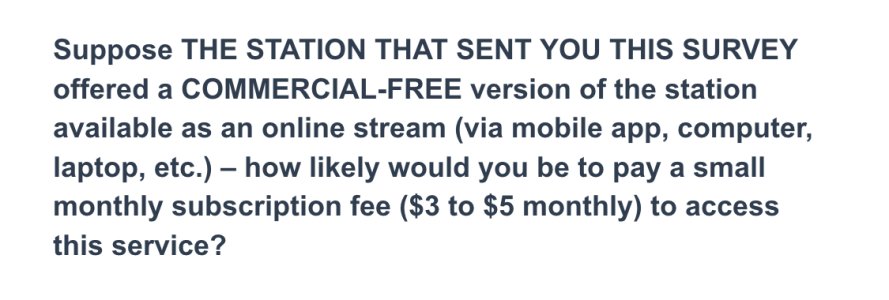I was filing out an online survey for a radio station. I was asked if I would consider paying a monthly subscription to access this station’s online stream.
Does anyone think this is the route radio companies will take in order to increase revenue?
Does anyone think this is the route radio companies will take in order to increase revenue?


